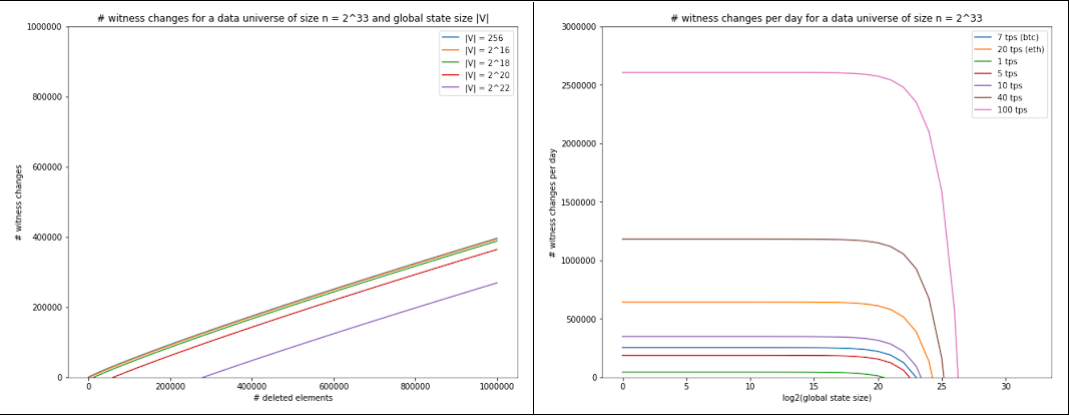[ad_1]

In an article launched as we speak by a16zcrypto, researchers Miranda Christ and Joseph Bonneau make clear the intricate challenges of implementing stateless blockchains. Their in depth analysis delves deep into the complexities of the subject, providing a recent perspective that guarantees to form forthcoming debates in blockchain know-how.
On this article, we discover their research on the expansion of blockchain states, the challenges of stateless blockchains, and rising options.
A Deep Dive into Stateless Blockchain Expertise
Blockchains have been evolving at an unprecedented tempo. With the surge in person quantity and transaction frequency, the quantity of information or ‘state’ that validators should retailer to authenticate transactions additionally will increase.
Whereas Bitcoin’s state is restricted to unspent transaction outputs (UTXOs), Ethereum’s state contains every account’s steadiness and the code and storage for every good contract. However is the rising dimension of blockchain states sustainable, and the place does the idea of “stateless blockchains” match into the image?
State Development: A Looming Problem
The analysis signifies that Bitcoin nodes at present retailer roughly 7 GB of information, and Ethereum nodes home about 650 GB. Nonetheless, because the transaction throughput (TPS) grows, so does the state storage requirement.
To deal with on a regular basis transactions, which may very well be within the tens to a whole lot of 1000’s of TPS, we may be storage wants within the terabytes and even petabytes. The analysis suggests this immense storage demand may threaten decentralization by making it laborious for people to turn into validators.
The thought of a stateless blockchain is interesting. In keeping with the analysis, validators would solely must retailer a constant-sized state, whatever the variety of transactions. This might simplify the method, probably permitting everybody to run a node on their cell phones. In concept, this is able to not solely make the system extra decentralized but in addition improve its safety.
Christ and Bonneau recommend that sensible implementation continues to be unfeasible, nevertheless. Whereas in depth analysis has been completed on stateless blockchains, no identified mannequin has been deployed but. One inherent situation is the necessity for customers to retailer “witnesses” that help validators in verifying account-related transactions. These witnesses, not like non-public keys, change regularly, including undue stress on customers and making the system much less user-friendly.
The Impossibility of True Stateless Blockchains
Christ and Bonneau’s analysis has highlighted one other vital problem: the tradeoff between sustaining a concise world state and regularly updating witnesses is key and unavoidable. The evaluation revealed that even when a person does not interact in any transactions, their witness could should be modified primarily based on different customers’ actions.

The examine additionally employed an information-theoretic argument, utilizing principles established by Claude Shannon, to reveal {that a} really stateless blockchain the place customers by no means must replace their witnesses is unattainable.
The Manner Ahead: Exploring Options
Though pure stateless blockchains could also be unfeasible, the examine discovered there are different promising options. One such mannequin includes a 3rd occasion, distinct from a person or validator, accountable for storing the total state.
This entity, termed a proof-serving node, would generate up to date witnesses for customers, permitting them to transact equally as in a stateless blockchain. The incentives and compensation mannequin for these nodes stay areas of lively analysis, nevertheless.
The analysis findings even have implications for Layer 2 (L2) solutions like rollup servers. Regardless of the optimistic view that L2 rollups may very well be the sensible implementation of stateless blockchains, the analysis signifies that challenges stay.
As an illustration, their examine suggests {that a} person’s rollup withdrawal witness would want frequent updating, or nearly all the L2 state must be moved to Layer 1.
Within the pursuit of enhancing effectivity, stateless blockchains have emerged as a big space of curiosity. Due to the work of Christ and Bonneau, we now have a clearer understanding of the challenges forward.
Whereas the dream of a pure stateless blockchain could stay simply that—a dream—the analysis and exploration on this discipline are certain to set the stage for options that steadiness effectivity with person comfort.
[ad_2]
Source link



